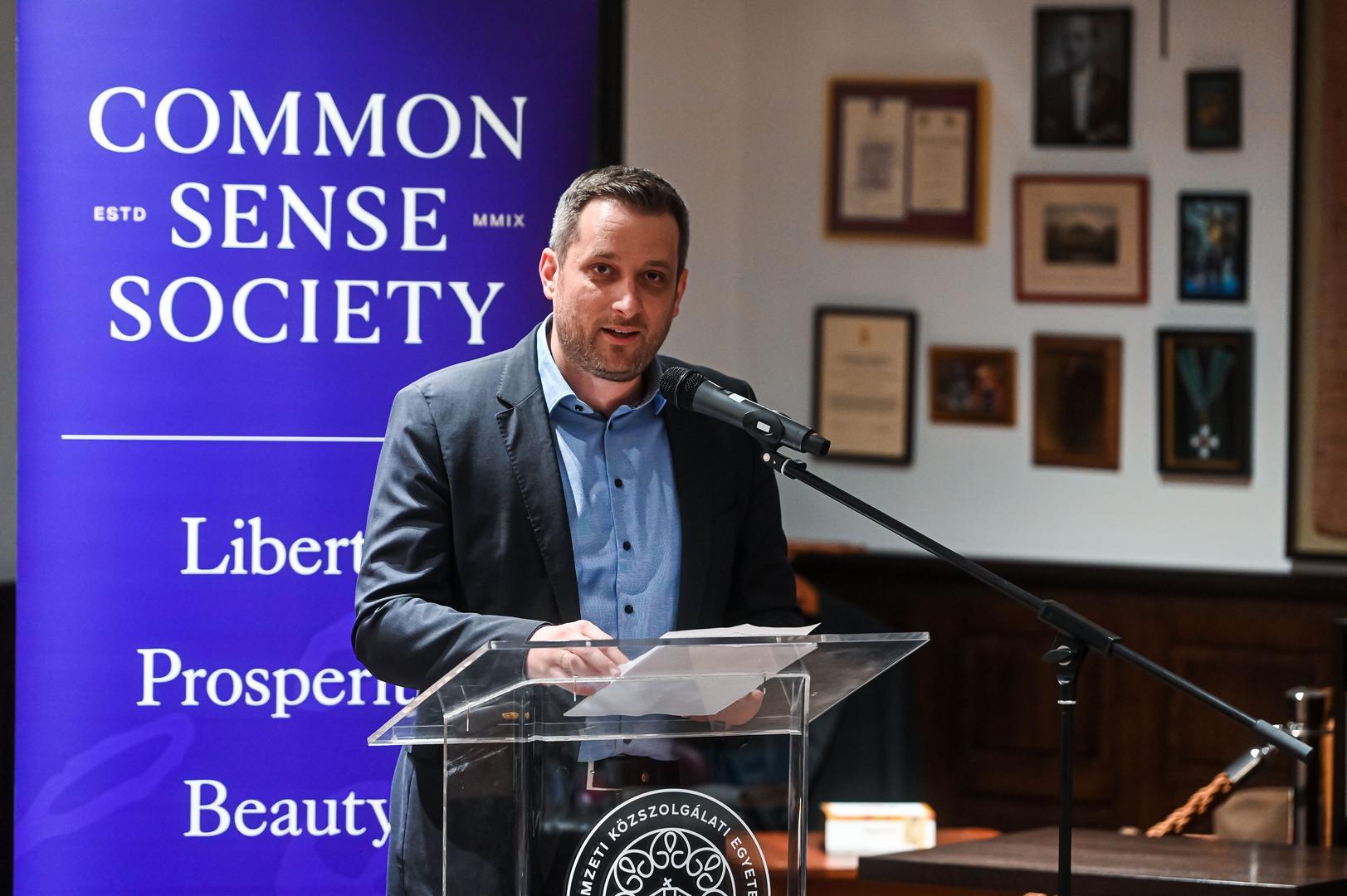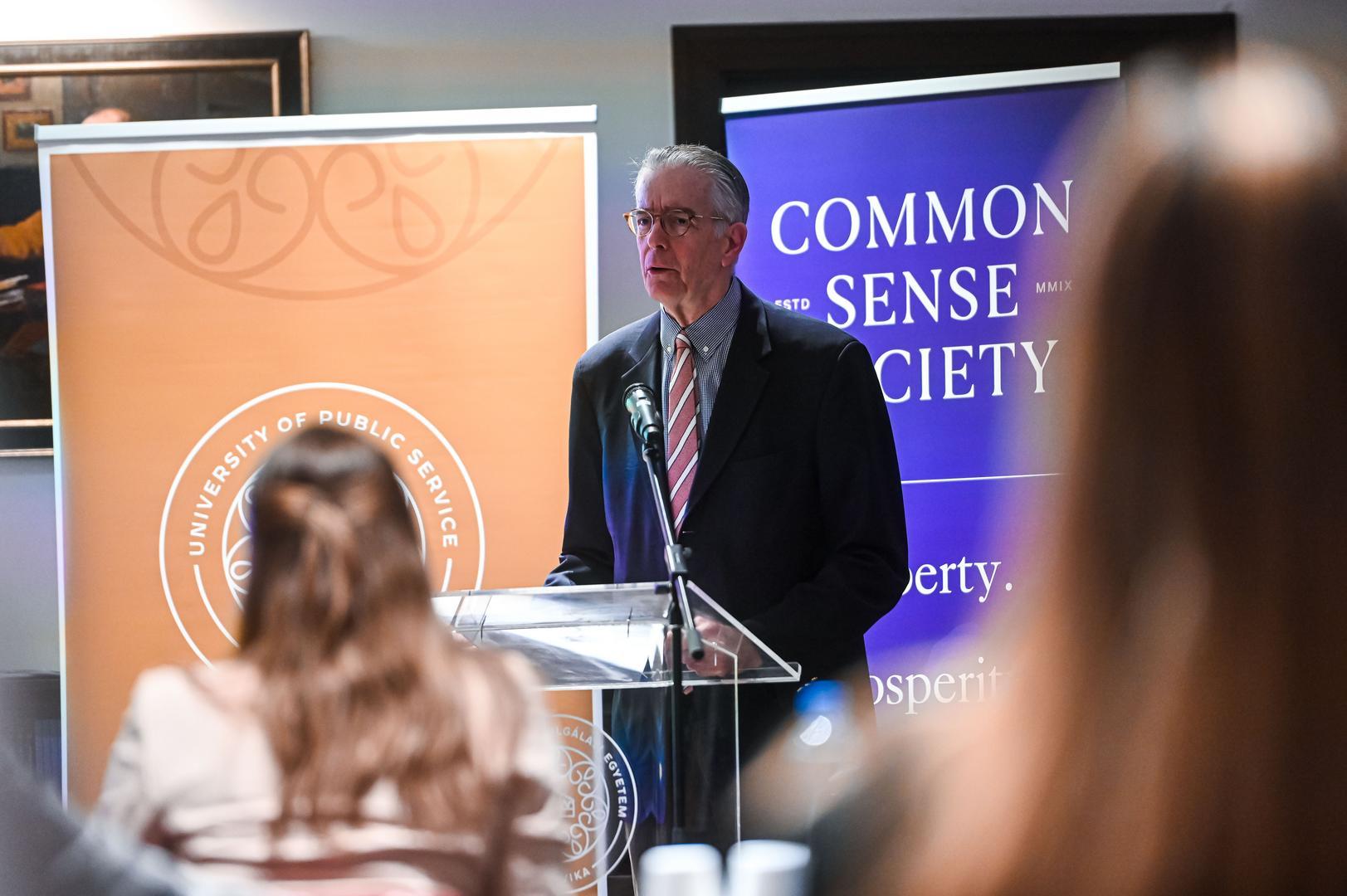
On 22 February 2023, in the John Lukacs Lounge of the Ludovika Campus, co-hosted by the Research Institute for Politics and Government of the University of Public Service and the Common Sense Society Hungary, participants of a scholarly discussion embarked on an interesting intellectual adventure, witnessing an expert discourse on the relation between architectural tradition and modernity from a transatlantic perspective.
Attendees were greeted by Bernát Török, director of the Eötvös József Research Centre, who recalled the thoughts of his father, Kossuth Prize-winning architect Ferenc Török regarding the overall social significance of architecture and the complex relationship of tradition and modernity. Next, the director of the Common Sense Society, Orsolya Domaniczky, briefly outlined the activities of the society, founded in 2009 with the aim to promote the values of Liberty, Prosperity and Beauty as part of an extensive international network.

The introductory part was followed by the thought-provoking lecture of renowned American architectural critic Catesby Leigh, titled „The Classical Tradition in Architecture: Once Normative, Now Counter-Cultural”. Mr. Leigh, co-founder and former chair of the National Civic Art Society (NCAS) aiming to reform the federal government’s architectural patronage along classical lines, started his lecture by recalling the architectural material of the 1893 Chicago World’s Fair. He demonstrated through illustrations the decisive influence which the human-scale, balanced and magnificent architecture based on the classic Greek and Roman architectural traditions had on the American designers of the first half of the 20th century. According to Catesby Leigh, the opposing, self-serving modernist efforts nowhere met public taste, and reflected only the fashion-dictated taste of progressive architects and investor circles supporting them. Due to the prevalence of these modernist aspirations, the urban environment is becoming less and less liveable. In the opinion of the straightforward American expert, these modernist buildings can hardly be called beautiful or of human dimensions, and sometimes do not even meet the principle of functionality. He emphasized that the classical tradition based on universal values is not at all incompatible with modernity, and demonstrated this with pictures of early skyscrapers from the first half of the 20th century, as well as American public buildings from the last few decades showing neoclassical features. According to him, a return to the great tradition of Western architecture can be a way out of the current impasse.
The presentation of Catesby Leigh was followed by reflections of art historian József Sisa, former director of the Institute of Art History at the Research Centre for the Humanities, and architect Domonkos Wettstein, assistant professor at the Department of Urban Planning and Design at the Budapest University of Technology and Economics, representing this side of the transatlantic conversation. József Sisa’s presentation showed the process of the development of the modern metropolis Budapest from the provincial Pest‒Buda during the 19th century through contemporary caricatures, while Domonkos Wettstein drew attention to the examples of the „other modern” in the Hungarian architecture of the 20th century inspired by Western trends and combining classical and local architectural traditions with elements of modernism.
The presentations were followed by an informal round table discussion moderated by Ferenc Hörcher, philosopher and historian of political thought, head of the Research Institute for Politics and Government at the University of Public Service, and senior research fellow of the Institute of Philosophy of the József Eötvös Research Network. The discussion touched upon the important architectural projects currently taking place in Budapest, the debates raging around them, the relationship of the present architectural trends and the political elite to the historical past, the assessment of the architectural heritage of the communist regime from an aesthetic point of view, as well as the urbanistic connections of dealing with social issues on the subject of housing estates, which challenges decision-makers on both sides of the Atlantic Ocean.
An important takeaway of the evening was that the architectural debates raging in the Hungarian capital also take place with similar intensity in America. And this confirmed the idea mentioned in the introduction, according to which architecture is a public matter, a legitimate subject of political and aesthetic debates, since „we are the city”.
Kálmán Tóth
research fellow
UPS EJRC Research Institute for Politics and Government
Photo: Dénes Szilágyi